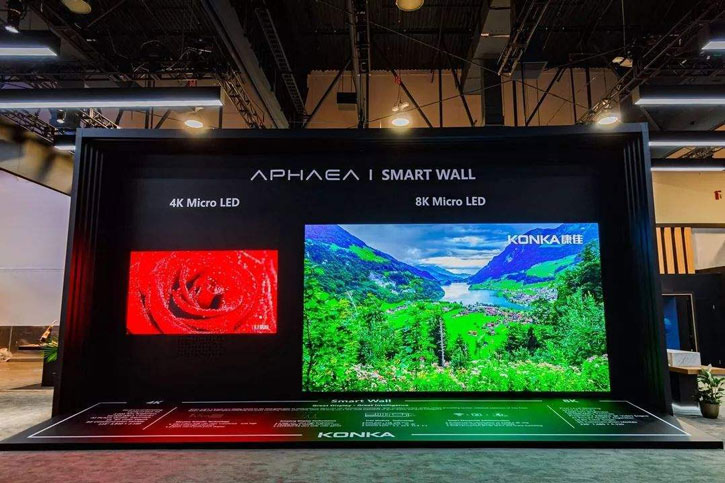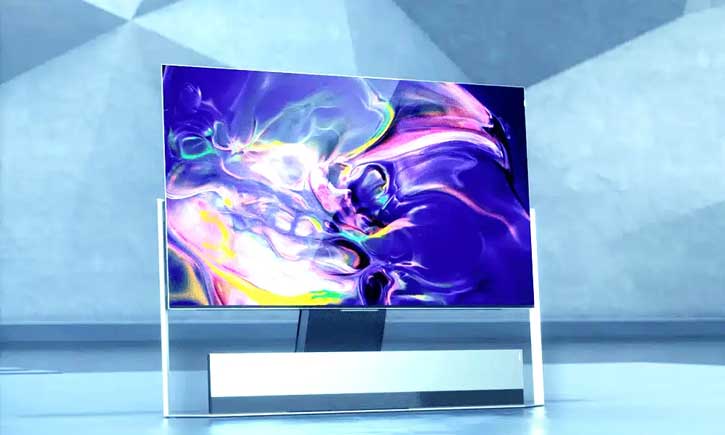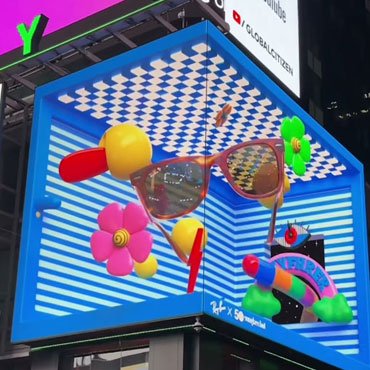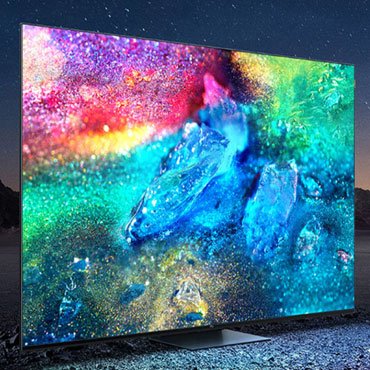2020 will be the first year of micro LED display. It is said that the factory invested by Apple will also provide micro-LED displays for Apple Watch in 2023: the latter will have major advantages such as high brightness, low reflection, energy saving, high resolution, high contrast, almost no screen burn-in, and long life.
This will make micro-led display the most critical display technology innovation and investment hotspot in recent years. The rise of micro-led will inevitably form a “mixture” with concepts such as fine pitch LED display and mini LED display. So, what is the difference between small pitch, mini, and micro?
Small pitch LED display, a very historical definition
It is impossible to verify how long the small-pitch LED products have appeared. This time period is at least 10-15 years old. However, the large-scale popularity of such products is only about 5 years old.
Inside the industry and most industry data research institutions, P2.5 and below products are regarded as “small-pitch LED displays”. This pixel pitch metric also has a clear “display system meaning”. That is, a 100-inch screen can accommodate 800*600 resolution content point-to-point.

For a 4:3 ratio display system, the 100-inch format is 2.03 meters wide and 1.52 meters high; for a 16:9 ratio screen, the 100-inch format is 2.15 meters wide and 1.35 meters high. About 15 years ago, high-definition content and standards were not rich enough, including indoor and outdoor “not very large-sized LED advertising screens, mainly using 4:3 content of 800*600 size”. Therefore, products that carry this content clarity have become the starting point of “small-pitch LED” by convention.
However, with the development of technology, the small-pitch LED technology continues to improve, and the spacing continues to shrink. The definition of video content is also constantly improving, so that today’s 4K/8K ultra-high-definition concept, people’s psychological “small-pitch” concept standard It is also making progress – many manufacturers have raised the entry threshold for small pitch to 2 mm pitch or 1.8 mm pitch: the visual implication is that 100 inches can carry high-definition quality content point-to-point.
Even for home-oriented LED display large-screen products, the starting performance requires a 100-inch 4K display, that is, the pixel pitch is around P0.5. Therefore, what kind of product is a fine pitch LED display is a concept with rich historical connotations, and it is also a concept that is constantly changing with technological upgrading, and it is also a concept that is closely related to specific applications and scenarios.
Of course, as a research institution, it is necessary to adhere to the P2.5 standard; however, in the era when P1.0 has made a comprehensive breakthrough, it is necessary to further research the standard subdivision, such as the “fine pitch” concept proposed by some manufacturers. reality-based.
Mini LED concept, a transitional definition standard
The pixel pitch of the LED display keeps getting smaller and smaller, and the size of the LED crystals used must also keep getting smaller – however, it is obvious that the smaller LED crystal particles are packaged and integrated with “finer” and “technical content” “Higher jobs.
“Appropriate pixel pitch, appropriate process maturity, and appropriate LED crystal particle size.” The three “appropriateness” have become the key basis for the birth of the mini-led concept. In other words, for display systems, especially products below P1.0, from the perspective of luminous brightness requirements, almost all 10-micron LED crystal particles can meet the requirements. However, considering “the particularity and difficulty of the integration process”, LED screens with a P1.0 pitch, currently using 200-300 micron LED crystal particles, are temporarily the “best” choice.
This is smaller than the traditional LED crystal particles, but it is not the “extremely tiny” LED crystal particle size, it becomes the concept of mini-led. Specifically, it mainly refers to products with LED crystal particle size in the range of 100-300 microns. In theory, these LED crystal particles have been able to manufacture small-pitch LED display products with P0.4-P1.2 specifications. ——Of course, products with larger spacing can also apply mini-led technology.
At the same time, mini-led technology has another connotation: a new backlight source in the era of HDR display on LCD screens. As a liquid crystal backlight, LED arrays do not require very high particle densities but do require somewhat higher brightness levels.
For example, 8K TVs may have less than 10% efficiency from the backlight to the screen brightness, and the backlight brightness needs to be more powerful. At this time, too small LED crystal particles are not competent, but mini-led technology is better.
However, as a backlight application, mini-led also has a special field: that is, to provide backlight for LCD screens such as mobile phones and smartwatches, it still requires smaller LED particle size. These product areas, whether it is mini or micro require specific product analysis.
To sum up, the use of mini-led technology has considerations of “process maturity and difficulty”, as well as “point luminous intensity requirements”, and it is also related to the pixel pitch of the display screen or array structure. At the same time, mini-led products can also use technologies such as all-in-one packaging (such as the popular four-in-one packaging in 2018) to achieve the “maximum potential and efficiency” of the traditional surface mount process system.

Mini LED concept, the technology that truly opens up the future
In the LED display, the LED crystal particles are always getting smaller and smaller: because the pixel density and PPI resolution of the display system are getting higher and higher; at the same time, the luminous efficiency of the LED material is also getting higher and higher. If the difficulty and cost of the integration process are not considered, the level of smaller LED crystal particles will be a technology with dual advantages in performance and cost, and even new application fields can be born.
For example, since 2014, Apple has been studying the use of ultra-fine LED display screens on smartwatch screens. Because, as the screen of a smartwatch, it must be small in size, and it requires a relatively long standby time. The built-in battery of the smartwatch cannot be larger, and sometimes it needs to be used under strong light… At the same time, these conditions are met, LCD and OLED display Neither is competent.
In contrast, micro-led products have the best ability to meet the above demanding requirements. The latest news suggests that Apple’s smartwatch may use a micro-led display for the first time in 2023 – and on a one-inch screen, displaying high-definition information, it is clear that the pixel pitch will reach extremely small levels. This means that the size of the LED crystal particles is very small.
In the industry, products with an LED crystal size of less than 100 microns or even 3-10 microns are generally referred to as microtechnology. This kind of product can theoretically provide the needs of VR near-eye ultra-high-definition display to 200-inch screen size ultra-high-definition display – subject to the human eye’s extreme resolution capability and pixel luminous intensity requirements at longer distances, larger size LED screens, “Not cold” about microtechnology.
Because the LED crystal particles of micro-led products are very small, and the pixel pitch of the final product is also very small (not larger than 1 mm, or even tens of microns), micro-led display technology can hardly inherit the existing packaging, testing, Maintenance and complete machine manufacturing technology.
That is, the surface mount LED technology has been completely replaced by the “mass transfer” technology that belongs to the micro era: in comparison, mini-led can use the mass transfer technology or the four-in-one package + surface mount technology.
Therefore, microtechnology, from the final product form (one-inch or even smaller ultra-clear display products to 200-inch large screens), and the process technology system (high-precision mass transfer has become a must-have technology) “completely changed the LED. Show” the historical aspect. It is the display technology that truly opens a new era. And in the context of the continuous maturity of microtechnology, the necessity of mini-led products will drop significantly.
On the whole, the rise and replacement of concepts such as small pitch, mini, and micro reflects the improvement in the fineness of LED display products and the continuous “miniaturization” of the corresponding LED crystal particle size; From surface mount to mass transfer; it even brings other key material advancements, such as the continuous upgrading of industry technologies such as glass substrate TFT to replace PCB printed circuit.
Summarize
Small-pitch LED is just an upgraded technology of LED display, which further reduces the distance between the lamp beads on the LED module. It is mostly used in larger-area display scenarios, such as monitoring rooms and lecture halls.
mini LED vs micro LED are further improvements of LED and are commonly used in small display scenarios such as TVs and mobile phones.
At the same time, this progress has also greatly broadened the application scope of LED display, from the earliest simple outdoor advertising to indoor high-quality fine display, and even today’s TV color TV products, future VR, smartwatch, or smartphone screen applications, etc., creating a space for the industry to continue to grow, and bringing huge wealth opportunities in the LED industry.




